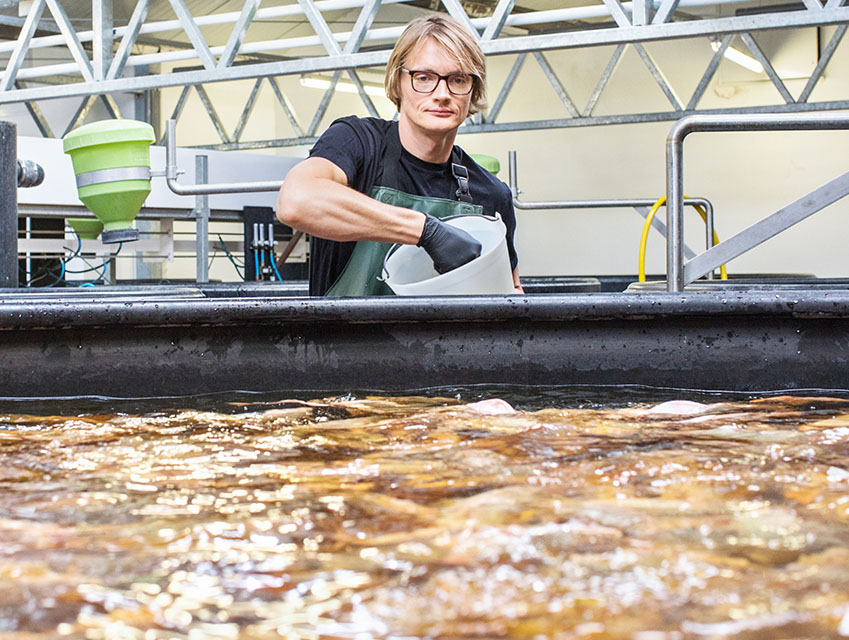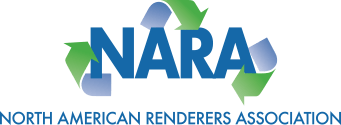NARA’s Commitment to Sustainable Animal Nutrition
Rendered animal protein meals are excellent sources of calcium, phosphorus, protein, and essential amino acids. When animal fats are added to feed rations, they provide needed energy and improve palatability.
Because North American renderers process at optimum temperatures over a prescribed length of time and they use strict quality control measures, animal protein meals are consistently high quality, uniform, stable, affordable, and nutritionally dense. The materials renderers provide allow for more sustainable pet food sourcing while producing high-quality meals for animals. Rendering practices are vital for sustainable and well-balanced pet food nutrition.
Ingredients in Pet Food
Pet food uses a wide range of ingredients that renderers can process from waste products. As a result, when excess materials from meats are removed during processing, they can go toward pet food nutrition.
There are several critical nutrients that pets need to stay healthy, such as proteins, minerals, vitamins, and carbohydrates, and animal nutrition research demonstrates that rendering can have a vital role in meeting this need. Key ingredients that come from rendering include:
- Meat and bone meal.
- Animal proteins.
- Animal fats.
These substances can serve as crucial nutrients for pets’ health and daily dietary needs. The ingredients may include human-grade food and other materials deemed safe for animal consumption. Dogs and cats of different breeds and sizes have various nutritional needs and may eat wet and canned foods, kibble, dry food, treats, and other options. Based on animal nutrition facts, individual pet food manufacturing companies follow different formulas to meet dietary requirements for animals.

Applications
Renderers can use a wide range of strategies to address critical requirements for animal protein meals. By repurposing meat, fat, and other processing remnants, the industry can provide resources to feed pets and aquaculture and meet healthy dietary benchmarks while reducing the amount of waste sent to landfills.
Pet Food
Pet food and products are a multi-billion dollar industry—and the market is growing. Rendered protein meals such as meat and bone meal, poultry co-product (also called by-product) meal, and fish meal are almost universally used in pet foods. They provide high-quality protein with a good balance of amino acids essential to pet health.
There are several key advantages to using rendering practices to source pet food, including:
- Safety: Renderers meet high-quality food processing standards to prepare materials for animal consumption, helping ensure the final products are safe and beneficial for pets’ health.
- Sustainability: By using materials that would otherwise be considered waste from standard meat preparation, renderers help save production costs and protect the environment.
- Nutrition: The proteins and fats obtained through the rendering process are highly advantageous for pets’ day-to-day health and meet dietary nutrition benchmarks.
View exciting results from a first-of-its-kind joint pet food study with the Pet Food Institute and AFIA detailing how the pet food production process feeds the agriculture economy and reduces food waste. This insightful research analyzes the wide-ranging benefits of rendering and pet nutrient production. It also demonstrates how the practice contributes to long-term sustainability efforts in this industry.
Read the full Pet Food study here
Aquaculture Feeds
Aquaculture is a rapidly expanding and diverse industry that cultivates the growth of fish and other aquatic life such as clams, oysters, and shrimp. To support aquaculture, an increasingly large segment of the market uses compounded feeds with high-quality and costly nutrients. Rendered food offers an economical alternative for preparing environmentally friendly and cost-effective animal protein meals to support aquaculture development.
Over the decades that rendered animal fats and protein have been used as part of a healthy diet for fish and other aquatic creatures, key research has demonstrated the sustainability and practical value of the practice. Ideally, aquaculture feed will include several vital compounds and proteins to support marine life’s development, such as essential amino acids and palatable nutrients.
By rendering animal co-products, meeting these nutritional requirements with more sustainable sourcing and at a lower production cost is possible.
Learn More With NARA
At the North American Renderers’ Association (NARA), we’re committed to supporting renderers and meat processors in sustainable waste product recycling. We represent the industry with advocacy and trusted resources that help educate and grow this critical field. For more information on our services and how to become a member of our organization, contact us today.

